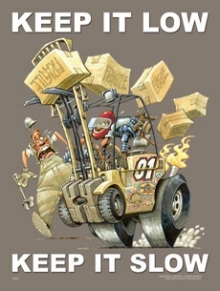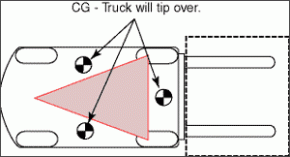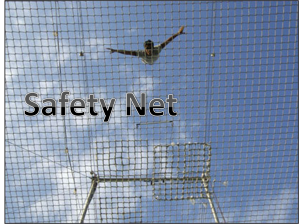Ryan from our Richmond Branch demonstrations a Genie GS 1930!
Tag: Industrial Equipment
Southeast Industrial Equipment is a Toyota forklift dealer dedicated to all lines of equipment we offer. From Capacity yard spotters to Cushman utility vehicles, the industrial equipment we carry is based on what our customers need. Materials handling equipment is our specialty and the full solution is what you will get when working with SIE. Award winning service, repair, and maintenance programs along with factory trained technicians are what keeps our customers’ industrial equipment running at their best.
Toyota – Leader in being Green

“Toyota is committed to environmental responsibility, and it’s a role we take very seriously. Beyond pushing the bounds of product innovation, one of Toyota’s goals is to support environmentally appropriate and socially beneficial initiatives contributing to a cleaner environment.”
Brett Wood, Chairman of Toyota Material Handling, U.S.A., Inc.
https://www.toyotaforklift.com/pages/about-us/environmental-focus/reducing-our-carbon-footprint.aspx#sthash.FaOrtsFI.dpuf
Toyota Material Handling has always been a leader when it comes to protecting the environment. In 2009 Toyota introduced the first ever Hybrid forklift in Japan. It combines the best of electric and internal combustion technology, taking advantage of the strengths of each power source. The forklift combines an internal combustion engine, electric generator and battery in a design that allows the engine to operate with optimum fuel/emissions efficiency. The forklift shifts automatically between battery and engine modes, simultaneously recharging the battery during operation. The result is a forklift that cuts emissions in half and is twice as fuel efficient. They are always looking for innovative new ways to benefit the environment.
The 8-series LPG and Diesel lifts highlight Toyota’s leadership in being green. The 8-series exceeds federal EPA emission standards, and also complies with California’s emission standards. Emission standards in California are stricter than the federal EPA requirements. They’re more stringent on hydrocarbon and nitrogen oxide (NOx) emissions, which become smog, from vehicles. California also has requirements that older construction vehicles be retrofitted so that they operate cleaner, emitting fewer gases into the atmosphere. The result for the LPG truck is 70% less smog forming emissions than Federal EPA standards. In addition, the 8-Series diesel models meet the more stringent EPA Interim Tier 4 emission standards, which means 26% less particulate matter than the Tier 3 standard. These machines increased the amount of recyclable parts used, as well as reduced the use of harmful substances during manufacturing. Toyota didn’t stop there; for every new 8-series forklift that was sold in 2013 they partnered with the Arbor Day Foundation to have a tree planted in a national forest damaged by fire or other natural causes. Over 30,000 trees were planted throughout the US and Canada.
Toyota’s energy-saving measures have enabled the company’s manufacturing plant to reduce CO2 emissions by 120,000 tons over the past five years. They are also a zero-landfill facility. Toyota encourages everyone to adopt green initiatives into daily applications. Even simple things such as carpooling or an energy-efficient lighting system can reduce our carbon footprint, and benefit the environment.
https://www.toyotaforklift.com/pages/about-us/environmental-focus/what-you-can-do.aspx
https://www.toyotaforklift.com/pages/about-us/environmental-focus/redefining-environmental-responsibility.aspx
https://auto.howstuffworks.com/fuel-efficiency/fuel-economy/carb2.htm
https://www.toyotaforklift.com/pages/about-us/toyota-philosophy/environmental-focus/future-vehicles.aspx
Be a Mast Master, a Capacity Connoisseur, and a Safety Specialist

Teenagers are required to have a drivers permit prior to receiving a full license. He or she needs proper guidance, training, and practice. The same is true when becoming a licensed forklift operator. These machines are 9000lbs or more depending on their capacity; they also steer from the rear, and have the capability to lift thousands of pounds. OSHA (Occupational Health and Safety Administration) requires forklift certification of employees operating these machines so it is important to make sure your company is in accordance with these government guidelines. In some instances It may help you receive better ratings on safety inspections; which could reduce insurance premiums.
A forklift operator who has been properly trained will know how to:
- Handle asymmetrical loads
- Understand the center of gravity
- Be able to stay within the stability triangle
- Know what traveling speed is safe for his or her task
Train your employees to always be aware of their surroundings, use the horn frequently, especially at intersections, and to ask for a spotter when visibility is limited. Doing these things could prevent damaging products, or colliding with a pedestrian. Tipping the lift truck is one of the most common operator errors. To help avoid this, the load must be within the capacity range of the forklift, and the operator must understand how a change in the center of gravity can affect the forklift’s ability to safely lift. Proper training is the first step in creating a safe and efficient work environment.
Investing properly in employee training has a huge long term return. You will see an increase in productivity and the life of your lift truck, it will lower operating costs, and most importantly the risk of accidents or injury is greatly reduced. When maneuvered correctly, the numerous benefits of a forklift definitely outweigh the risks.
If you’re not sure how to begin proper operator training, don’t worry we can help! Call us (866) 696-9125 or go online www.sielift.com to make an appointment. We have training programs to certify your employees, and we can answer any questions you may have regarding safe practices and OSHA guidelines. If your company has a large facility with more than five forklift operators; the train-the-trainer program may be beneficial. This program is designed to educate one of your operators to be able to instruct others. In doing this, you will always have a certified trainer on site. No matter which training program you choose; we will be there to teach, train, and instruct all of your operators.
“Powered Industrial Trucks.” Occupational Safety & Health Administration. United States Department of Labor. Web. 21 Mar 2014. <https://www.osha.gov/SLTC/poweredindustrialtrucks/index.html>.
Rent or Own We’re Southern Known
At Southeast Industrial Equipment we offer a variety of lift trucks, construction equipment, and other industrial equipment for your material handling operations. When considering your business needs, there are many choices you will have to make. One of the questions many companies find themselves asking is: should I purchase or rent? There are pros to renting and owning, but it’s important to consider what your application will be and how long your business needs the equipment. Making this decision can be tough, especially when your application may call for everyday or just sporadic use. Also consider how quickly a need can arise for a piece of equipment. For example, generators though rarely used, are needed in the case of an emergency and would be smart to purchase for those occasions when it is needed right away.
If your application requires continual use, or equipment is operated to its maximum ability, it would be more cost effective and convenient to own it. The hour meter reading would not be monitored. When you own the lift truck, it will always be there when you need it. Purchasing is also made easier with the financing options that are available. In addition to financing; purchased equipment is tax deductible for the year it was bought, this helps business owners fiscally.
On the other hand, if a machine is not versatile and is infrequently used; renting is a more cost effective option. For companies without a significant amount of capital or well established credit, renting may be best. If you are renting; the cost for maintenance is generally included and the machine provider will service your lift truck at regular intervals.
Keep in mind the needs of your company, and the amount of upfront costs you can handle. In weighing these options you can make an educated decision on what’s best in your situation.
Here is a chart to better view your options when it comes to renting or purchasing a lift truck.
| Purchase | Rent |
|
|
Whether your company decides to own, rent, or a combination of both; Southeast Industrial Equipment has you covered. We have equipment available that will fit your needs. Please call (866) 696-9125 or go online www.sielift.com to make an appointment.
Work Place Safety Net
When trapeze artists perform in a circus they are provided with a safety net. A “just in case” the routine doesn’t go the way it was planned. Banking institutions require a high credit score or collateral prior to lending money. Shareholders like security to reduce the risk of loss when investing their money in stocks. Vehicles deploy airbags in the event of an accident. These are all safety measures. Being prepared for the worst case scenario is not a new idea; neither is preventing the worst from happening. As the saying goes “better safe than sorry,” when it comes to material handling there are several different factors when creating your safe work space.
Safety goes beyond wearing a hard hat and safety goggles. There are many ways employees can increase safety precautions to reduce the risk of accidents and injury. According to OSHA, lift truck accidents cause about 100 fatalities and 36,340 serious injuries every year in general industry and construction. Of these accidents approximately 20-25% are caused, at least in part, by inadequate training. Training is the most important factor in preventing accidents, and should be enforced from the top down. OSHA’s website provides videos, PowerPoint slides, and numerous resources to aid in preparing your employees for the equipment they will be using. Safety education and equipment certification should be thought of as an additional insurance policy to provide your employees with a safe environment.
Quick Safety Tips:
- Operators should be trained to handle asymmetrical loads, and should never handle loads heavier than the weight capacity of the lift truck.
- Designate walkways for pedestrians that are clearly marked and easy to follow. This will prevent forklifts and people traveling the same paths.
- Narrow spaces make it hard to maneuver a forklift, make sure there is adequate space for your machine to move around.
- Set speed limits and enforce them. The slower a forklift is traveling the easier it is to stop.
Accidents even with no injury to workers are costly to companies. Repair of facilities and replacing damaged goods is expensive and unproductive. A disabled machine means efficiency will be down and workers could be idle for hours or even days depending on the needed repair. Employees being trained and constantly aware of their surroundings will help minimize risk of accidents and injury. The best practice really is safety first. It saves time, money, and people’s lives. Keep employees safe and keep costs down by creating a safe work environment. If there is a question about a practice being safe, it probably isn’t.
At Southeast Industrial Equipment we provide employee training to assist your company. To request an appointment, please call (866) 696-9125 or visit us online at www.sielift.com.

